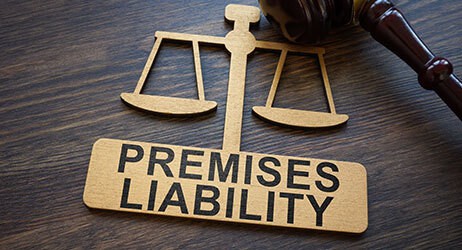Workplace safety is a paramount concern for both employers and employees. Accidents and injuries can occur in any workplace, and when they do, it’s essential to determine liability. Premises liability accidents in the workplace involve injuries or accidents that occur on a business property or worksite. But who is liable for these incidents? In this blog, we will explore the concept of premises liability in the workplace and the parties responsible for ensuring a safe environment.
Understanding Premises Liability
A legal concept known as premises liability holds property owners and occupants accountable for injuries sustained on their property as a result of carelessness or dangerous conditions. This legal principle is applicable to both business establishments and places of employment. It means that in a workplace setting, both employers and property owners may be held accountable for mishaps or injuries sustained there.
Key Elements of Premises Liability in the Workplace
To determine liability in a premises liability case at a workplace, several key elements must be considered:
- Obligation of Care: In order to ensure the safety of their staff, guests, and clients, employers and property owners have a responsibility. This responsibility entails doing routine maintenance, inspections, and risk assessments.
- Breaking of Duty: When an employer or property owner neglects to take appropriate action to prevent accidents or injuries, it is a breach of the duty of care. This can be skipping over critical maintenance, failing to alert people to dangers, or failing to provide enough safety training.
- Causation: The injury must be directly related to the violation of duty. To put it another way, it must be proven that the risky situation or negligence was a direct cause of the accident or harm.
- Damages: Actual damage must have been sustained by the injured party as a result of the accident, such as medical expenses, lost wages, or pain and suffering.
Now that we have a clear understanding of premises liability in the workplace, let’s explore who may be held liable in such cases.
Employers:
Employers have a primary responsibility for the safety of their employees. They are expected to:
A. Maintain a safe work environment by regularly inspecting the premises for hazards and promptly addressing them.
B. Provide adequate training and supervision to employees, ensuring they are aware of safety protocols and potential risks.
C. Comply with safety regulations and industry standards applicable to their specific business or industry.
D. Ensure that equipment and machinery are well-maintained and in proper working condition.
E. Conduct thorough investigations of workplace accidents and take corrective actions to prevent future incidents.
Employers are often the first line of liability in premises liability cases at the workplace due to their direct control over the work environment and their duty to protect their employees.
-
Property Owners:
In some cases, the property owner may not be the same entity as the employer. For instance, a business may lease its premises from a property owner. In such situations, both the employer and the property owner may share liability for workplace accidents, depending on their respective responsibilities outlined in their lease agreement.
Property owners may be held liable if they:
A. Were aware of unsafe conditions on their property but failed to rectify them.
B. Failed to meet legal requirements for building maintenance and safety.
C. Were directly responsible for creating the hazardous condition.
Property owners have a duty to ensure the safety of their premises, and they cannot evade liability by simply leasing the property to others.
-
Third Parties:
Sometimes, a third party, such as a contractor, subcontractor, or supplier, may be responsible for a workplace accident. In cases where a third party’s actions or negligence contributed to the injury, they may be held liable separately from the employer or property owner.
For example, if a contractor hired to perform maintenance work on a property causes an accident due to their negligence, the injured party may have grounds to pursue a premises liability claim against both the employer and the contractor.
In premises liability accidents at the workplace, multiple parties can be held liable, including employers, property owners, and even third parties. The specific circumstances of each case will determine the extent of liability for each party involved. It is crucial for employers and property owners to prioritize safety, conduct regular inspections, and address hazards promptly to minimize the risk of accidents and potential legal consequences. Employees also play a role in maintaining workplace safety by adhering to established safety protocols and promptly reporting any hazardous conditions. By working together, all parties can contribute to a safer and more secure work environment. If you think you have been wronged at your workplace, call now for a free consultation (718) 414-6642.


 Who Is Liable for Premise Liability Accidents at the Workplace?
Who Is Liable for Premise Liability Accidents at the Workplace? 

